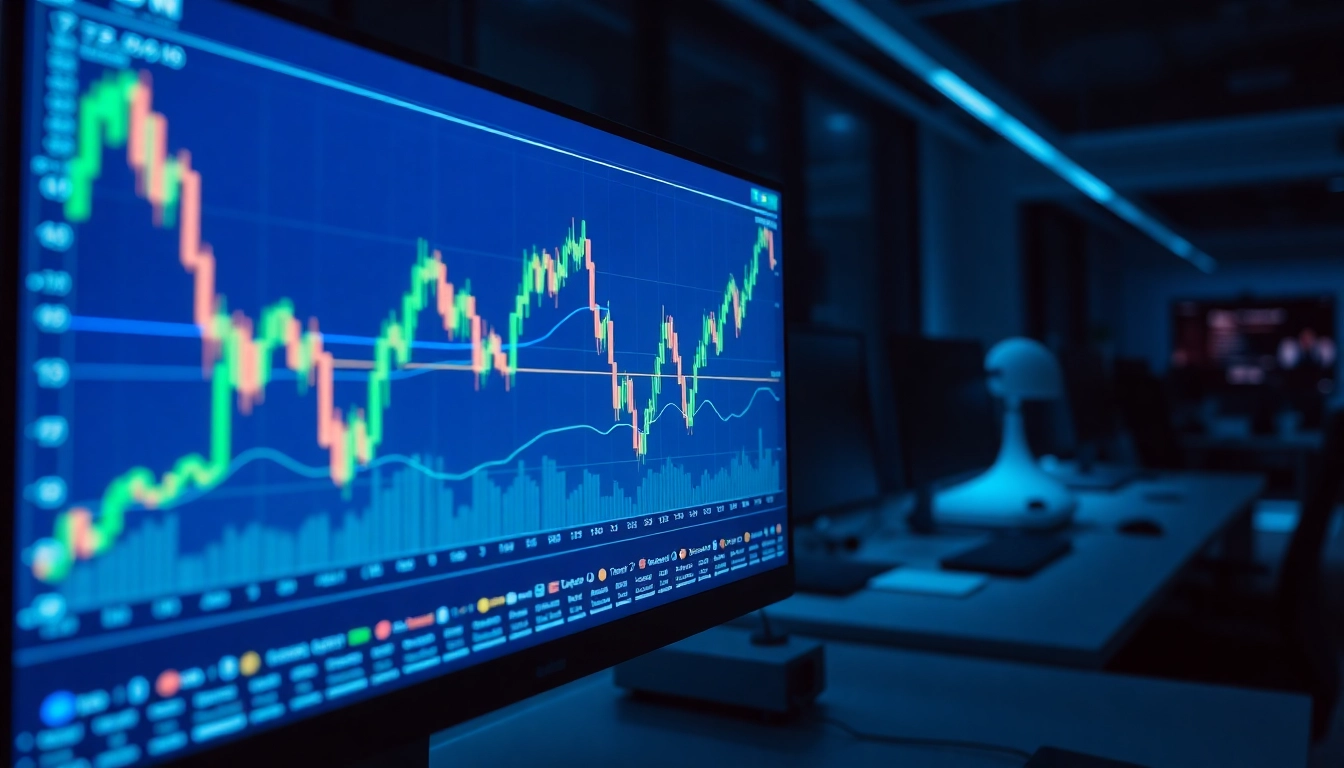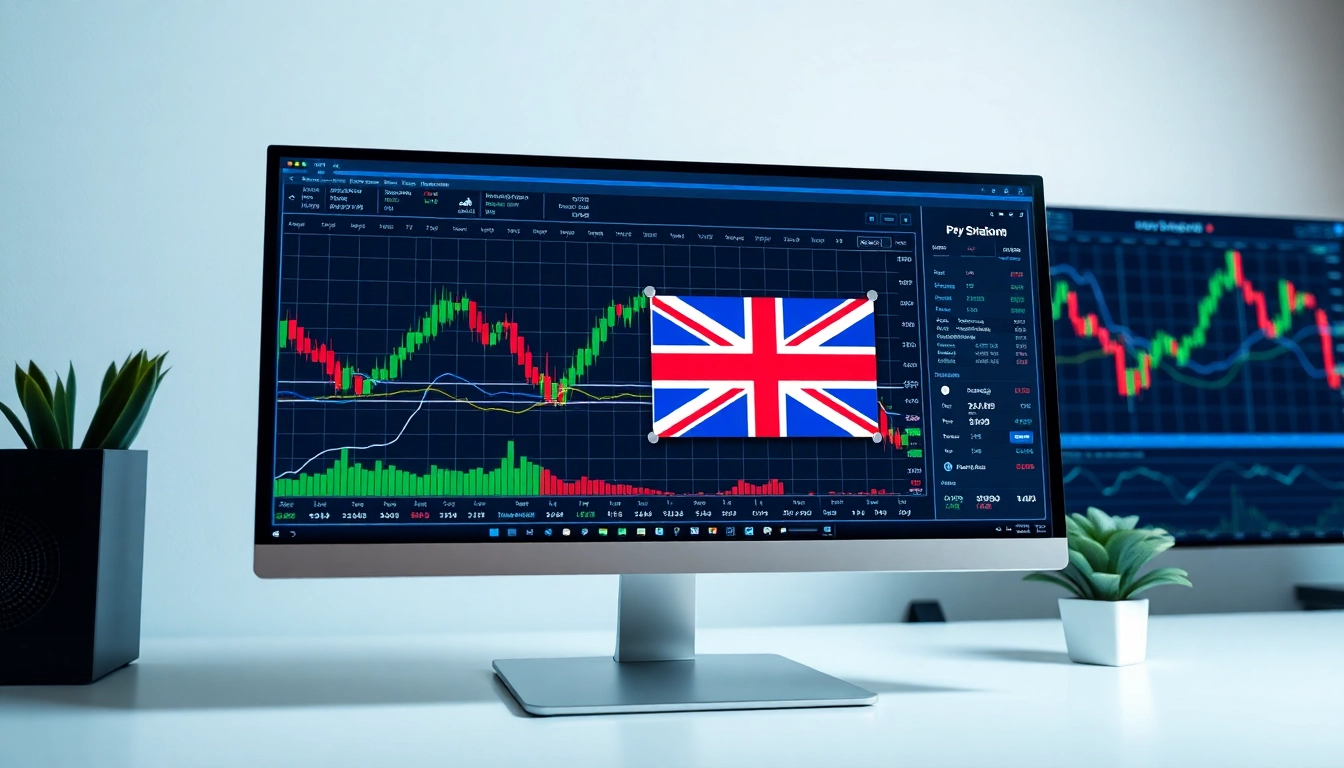Introduction to Trading View and Its Core Features
In today’s fast-paced financial markets, having access to real-time data, advanced analysis tools, and a vibrant trading community is essential for both novice and experienced traders. Trading View has established itself as a leading platform that combines powerful charting capabilities with social networking features, enabling traders worldwide to monitor markets, share insights, and execute strategies seamlessly. This platform’s versatility and depth make it an indispensable resource for anyone serious about trading or investing.
What is Trading View and Why It Matters
Trading View is more than just a charting tool; it is a comprehensive financial analysis platform designed to cater to diverse trading needs. Since its inception, Trading View has evolved into an ecosystem that integrates market data, technical analysis, social sharing, and trading execution. This all-in-one approach provides traders with a unique environment where they can analyze multiple asset classes—from stocks and cryptocurrencies to forex and commodities—from a unified interface.
Its significance in the trading community stems from its accessibility, customizable features, and robust social features that allow traders to learn from each other, validate strategies, and stay updated with market trends. As the platform continues to innovate, it remains a vital resource for traders looking to stay ahead in competitive markets.
Key Tools for Traders and Investors
Trading View offers a plethora of tools designed to enhance analysis and decision-making:
- Advanced Charting: Multiple chart types (candlestick, bar, line, Heikin-Ashi) with customizable timeframes.
- Technical Indicators: Hundreds of built-in indicators (e.g., RSI, MACD, Bollinger Bands) and the ability to create custom scripts via Pine Script.
- Drawing Tools: Trendlines, Fibonacci retracements, Elliott Waves, and more for precise technical analysis.
- Market Data Integration: Real-time data feeds and historical data across global exchanges.
- Alerts & Notifications: Customized alerts based on price levels, indicator values, or technical patterns to automate decision points.
- Social Community: Share ideas, read analyses by others, and collaborate within an active community.
These tools collectively empower traders to develop, test, and refine their strategies in a dynamic environment that mirrors real market conditions.
Understanding Market Data and Chart Types
Market data aggregation is fundamental to Trading View’s effectiveness. It provides real-time feeds across multiple markets, ensuring that traders have access to the most current information. Chart types available include:
- Candlestick Charts: The most popular for technical analysis, offering detailed patterns for trend recognition.
- Line Charts: Simplified visuals for broad trend analysis.
- Bar Charts: Show high, low, opening, and closing prices, useful for intra-day analysis.
- Heikin-Ashi and Renko Charts: Filter out market noise to identify trend direction more clearly.
Understanding which chart type to use in various contexts is crucial for accurate market interpretation and informed trading decisions.
Getting Started with Trading View for Beginners
Creating Your Free Account and Setting Up Watchlists
Getting started with Trading View is straightforward. Beginners can sign up for a free account that unlocks essential features such as chart customization, limited alerts, and community access. Once registered, users should set up watchlists—to monitor favorite assets—by adding symbols across different markets. Proper watchlist organization accelerates decision-making and keeps critical market data at your fingertips.
Navigating the Interface and Customizing Charts
New users should familiarize themselves with the platform’s intuitive interface. The main workspace displays your active chart, with side and bottom panels for indicators, data feeds, and news. Customization options allow traders to adjust themes, grid layouts, and timeframes. Learning how to resize, move, and save these layouts promotes efficiency and helps create a personalized workspace tailored to your trading style.
Using Alerts and Indicators for Smarter Trading
Alerts are vital for timely market entry and exit points. Setting up alerts based on price levels or indicator signals ensures that traders do not miss key opportunities. Combining alerts with technical indicators creates a powerful strategy—such as being notified when RSI crosses a certain threshold or a moving average crossover occurs, enabling traders to act swiftly and confidently.
Advanced Techniques to Maximize Trading View’s Potential
Implementing Technical Analysis Strategies
Technical analysis forms the backbone of profitable trading. Trading View’s comprehensive suite of tools allows users to implement strategies such as trend following, breakout trading, and reversal identification. Chart patterns like head and shoulders, double bottoms, or flags can be detected visually or through automated scripts. Backtesting these strategies within the platform enables traders to validate effectiveness before real capital commitment.
Leveraging Community Ideas and Social Features
One of Trading View’s distinguishing features is its vibrant social network. Traders can publish ideas, analyze others’ setups, and discuss market conditions. Engaging with this community fosters continual learning, exposes traders to diverse viewpoints, and helps refine analysis skills. Following top analysts and participating in shared ideas accelerates mastery and broadens perspectives.
Integrating Trading View with Your Trading Workflow
To maximize efficiency, traders should integrate Trading View seamlessly into their broader workflow. Exporting charts, setting up API connections with brokerage accounts, and automating alerts can streamline trading operations. Many brokers support direct order execution from Trading View, reducing latency and enhancing execution speed.
Performance Metrics and Best Practices for Effective Trading
Tracking Your Trades and Analyzing Outcomes
Consistent performance evaluation is essential. Traders should use Trading View’s journal features or external tools to record trades, analyze win-loss ratios, and identify recurring mistakes. This disciplined approach helps in iterating strategies and improving profitability.
Optimizing Settings for Different Asset Classes
Each asset class exhibits distinct behaviors. For stocks, trendlines and volume indicators may be pivotal; for cryptocurrencies, volatility indicators are more relevant. Customizing chart settings—including timeframes, indicators, and alert thresholds—tailors analysis to the specific nuances of each market, enhancing decision accuracy.
Staying Updated with Market Trends and News
Real-time news integration and economic calendars within Trading View keep traders informed about events that impact markets. Monitoring earnings releases, geopolitical developments, and macroeconomic reports helps traders anticipate volatility and adjust strategies proactively.
Future Trends and Innovations in Trading View Tools
Upcoming Features and Enhancements
Trading View continually invests in innovation. Future enhancements may include AI-driven analysis, more sophisticated automated trading features, and expanded mobile functionalities. These developments aim to empower traders with smarter tools and more seamless experiences.
Adapting to Market Volatility with Real-Time Data
With increased market volatility, especially during global events, the importance of real-time data becomes paramount. Trading View’s upgrades aim to deliver ultra-fast data feeds and adaptive alerts that help traders respond swiftly to market shocks.
How Trading View Continues to Empower Traders
The platform’s ongoing integration of community-driven content, advanced analysis features, and user-friendly design ensures that traders stay well-equipped. By fostering a collaborative environment and embracing technological advancements, Trading View remains a cornerstone of modern trading strategies.




